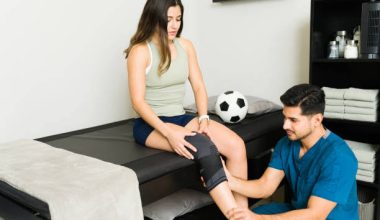This post by Daily Human Care is all about the waxing therapy.
In order to have a successful waxing therapy, you must be prepared beforehand. This therapy is not only relaxing but also helps you get rid of body hair. There are several types of wax: strip wax, hot wax, and Paraffin wax. To choose the right one, you must learn about the risks and benefits of each one. If you want to get any of these therapies: strip wax, hot wax, and paraffin wax, you can visit us freely at udmassage.com.
Table of Contents
Paraffin waxing therapy
Paraffin waxing is a popular treatment in nail salons and spas. Its luxurious feel makes it a great addition to your manicure or pedicure. Paraffin wax can also be used for a variety of other conditions. It is safe for most people, but some people should avoid paraffin treatments because they have certain health conditions.
Paraffin wax is an effective treatment for painful feet and can relieve joint stiffness and poor circulation. It’s also useful for treating muscle spasms and aches. Using a paraffin wax warmer helps keep the wax at the proper temperature. Paraffin wax can also help relieve the symptoms of arthritis.
Paraffin wax is a natural treatment that can be used to reduce the symptoms of arthritis, fibromyalgia, and rheumatoid arthritis. Studies show that paraffin wax can help reduce inflammation and joint stiffness and improve blood flow to the joints. The treatment also reduces pain and swelling caused by arthritis.
Paraffin wax treatments have a long history of use. It was originally used in massage therapy during the Roman Empire and is now a common physical therapy for sports injuries. Many spas offer paraffin wax treatments. The benefits of paraffin wax treatments go far beyond softening and smoothing skin. In fact, paraffin wax treatments can help relieve a variety of physical ailments, from arthritis to back pain.
Paraffin wax is a white, odorless substance made from petroleum. It is safe to use on the skin and is very non-drying. Moreover, it has a low melting point which makes it a good choice for the skin. It is also used for cosmetic purposes, such as candles and crayons.
Strip waxing therapy
The most common benefit of strip waxing is that it is less painful than hot wax and can be used on a larger area. It is also faster to apply and remove and is typically used for areas of the body like the legs. The disadvantages of strip waxing are that it can cause bruising, tearing, and ingrown hair.
There are several types of strip waxes, including bikini waxes and face strips. Some contain natural extracts, pure essential oils, high-grade resins, and titanium dioxide, which will leave the skin feeling refreshed and smooth. But whatever strip of wax you choose, be sure to check that it doesn’t leave a sticky residue.
Quality wax is important for the safety of your clients. You’ll want to use premium-grade strip wax, which is hygienic and non-sticky. Moreover, it’s important to choose a highly skilled therapist with proper training and experience. Then, you’ll have a higher chance of attracting new customers and retaining existing ones.
The wax used in strip therapy must be at the right temperature for it to effectively remove hair. It should be thick enough to adhere to the hairs but still, be malleable enough to be pulled by a client. However, it should never be so hard that the wax will burn the skin. If you’re a first-timer or have very coarse hair, you may want to go for a harder wax.
When it’s time to have your hair removed, you should always wash and dry the area before you get started with strip waxing therapy. This will ensure the best results. You should also be sure to avoid excessive sweating, sun exposure, and tight clothes for 24 to 48 hours. After the treatment, you should exfoliate again with post-depilatory wipes to condition your skin.
Hot waxing therapy
Hot wax is a form of self-care that can benefit your health and skin. The process involves applying specially heated plain wax to the area that needs waxing. Hot wax has higher melting points than normal “warm” wax and is easier to remove stubborn hair. It is also more comfortable. You can get waxing on your face and intimate parts, or have waxing done on your underarms.
Hot wax is typically heated to 55 to 65 degrees. This heat helps the hot wax adhere to the hair follicles better and leaves no sticky residue. Hot waxing is best suited for small areas and is also safe for sensitive skin. Hot wax treatment is more time-consuming than strip wax.
Hot wax can also help reduce the risk of shaving rash, which is an inflammation of the skin. It can also help prevent ingrown hairs, which can be unsightly and painful. They can also become infected and can lead to scarring. Professionals recommend Hot Wax from Perron Rigot over other types of wax.
Paraffin wax is also used as a form of hot wax therapy. It is beneficial to circulation and blood flow by providing warmth to the area. It also helps people with arthritis to move better and enjoy more freedom. A paraffin wax treatment can be provided at a salon or in your home. Just be sure to follow the instructions carefully to avoid burning yourself or damaging your skin.
Paraffin wax has a low melting point, making it an ideal option for patients with sensitive skin. It prevents blisters and burns. However, it can cause heat rash in some people with very sensitive skin. This condition results in small red bumps on the skin. People with chemical sensitivity can also experience breakouts and minor swelling.
Strip-less wax
When you go for a waxing session, it’s important to understand the difference between strip waxing and strip-less waxing therapy. Strip waxing involves the use of cloth or paper strips placed on the area to be waxed. These are then pulled off in the opposite direction of hair growth, which prevents trauma to the skin. In contrast, strip-less waxing, also known as hard wax, uses melted wax pellets to apply a thick layer on the area to be waxed. Once the wax has hardened, the strip is ripped off.
The new generation of strip-less wax is designed for all skin types and body areas, including sensitive areas. Its gentle formula follows body curves and captures even the coarsest hair without leaving a sticky residue. Another advantage of this treatment is that the process is easier and faster. Moreover, the wax dries faster, which minimizes discomfort.
After strip-less waxing therapy, a soothing lotion is applied to the skin, which helps minimize the pain during the procedure. Although treated hairs not likely to regrow, some do, so the process may need to be repeated several times to remove the hairs that are dormant. This is a great way to give yourself a more youthful appearance without having to sacrifice your skin’s health or your time.
If you have sensitive skin or a history of eczema, you should be aware of the risks associated with strip-less waxing therapy. Although waxing can be effective, it can leave you with ingrown hairs if the skin is too tight or too irritated. During the first few days after waxing, you should avoid excessive heat, alcohol, and other forms of friction on the area.
Joint mobilization
Waxing therapy has been shown to be an effective treatment for stiff joints. Its use has been documented in various studies conducted by different authors. Its benefits for arthritis patients are evident in these studies. Specifically, it is useful for pain management and stretching of joints. However, more studies are needed to determine whether waxing therapy can help patients with rheumatoid arthritis.
Joint mobilization helps to reduce pain, improve range of motion, and increase overall function. However, the benefits are not yet fully understood, so it’s important to discuss any health issues with your waxing therapist before getting started. Additionally, it is important to avoid using forceful manipulations and to focus on lower-grade mobilizations.
Waxing is a deep heat therapy that improves mobility by warming the connective tissue. The process involves applying molten paraffin wax to the skin. This increases blood flow and improves joint mobility. It is most commonly used in the treatment of painful hands and feet. It can be used in combination with common mobilizing techniques and customized exercise programs.
In this study, the wrist flexor tendons had difficulty sliding during flexion and extension. The palmar scar was found to limit the tendon’s ability to slide during this movement. Because of these restrictions, force assessment was not possible. Therefore, the treatment involved a combination of hand and forearm massages.






